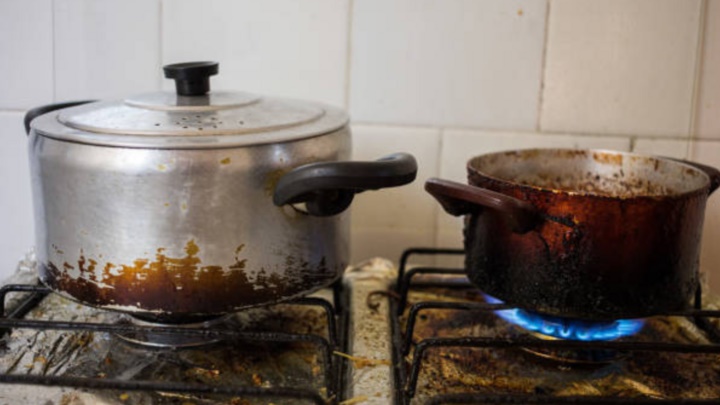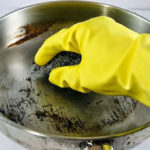A stove heated pot will inevitably turn black at the bottom; however, there are some reasons that make the pot blacken more and faster. Addressing these factors will help your pots to be less blackened.

Tips to avoid blackened pots when using gas stoves will help you feel less bothered about the quick blackened bottom. (Photo: Istock)
Tips to avoid blackened pots when using gas stoves
Uncleaned pots before and after use are one of the reasons that cause the bottom to blacken quickly. When you cook, cooking oil, fish sauce, and spices can fall or flow out and stick to the surrounding and the bottom of the pot.
If not cleaned and continue to use, those fallen parts will be burned, creating a blackened layer at the bottom of the pot. When it is still new, these blackened layers can be easily removed by a metal scrub but if left for a long time, it will be difficult to clean, and it will harm the pot and affect the quality of the food. Therefore, one of the tips to avoid blackened pots when using gas stoves is to clean the pot thoroughly before and after cooking.
Gas flames also make the pots blacken faster. The red flame is because the gas is running out or of poor quality. To fix this, you need to check your family’s gas cylinder and replace it. You should choose quality and reputable gas cylinder suppliers.
Misaligned gas stove windshields also cause insufficient gas and make the flame red and the pot black. You should adjust the windshields by slowly rotating them until the flame turns blue.
Clogged flame outlets are also a cause of red flames and blackened pots. This situation occurs when the stove is not cleaned regularly, and food sticks to the gas nozzles during cooking. To fix this, remove the burner head, use a needle and a brush to clean the flame outlets, wait until it is completely dry, then reassemble it in place.
If you have tried all the above methods but the gas stove still has a red flame, it is likely that the gas conduit has foreign objects. In this case, if you do not have the skills and knowledge of how the gas stove works, call a technician to check and fix it.
So basically, finding the cause to handle the red flame situation is the most effective tip to avoid blackening pots when using gas stoves.
Tips to remove rust stains from gas stoves
A gas stove used for a long time will have dirt, rust stains caused by food residues. You can remove them with the following methods.
– Squeeze a lemon to get the juice. Use a cloth to soak in lemon juice and then rub directly on the rust stains and let it sit for about 10 – 15 minutes, then wipe the stove again. The acid in the lemon can remove rust stains more easily.
– Dissolve a little baking soda with water in a 1:1 ratio, stir well to create a thick paste, then put it into a small spray bottle. Spray this mixture on the rust stains, combine it with scrubbing with a piece of aluminum foil, and finally wipe it with clean water. Baking soda can remove rust stains.
– Mix vinegar with clean water in a 1:2 ratio, shake well and then pour this mixture on the rust stains, leave it for a while and then wash it.
– Cover the sink, immerse the gas stove grates in boiling water mixed with a little dishwashing liquid. After 15 minutes, scrub the grates once and then rinse the grates with clean water.
According to VTC news
How to Resolve the Issue of a Blackened Cooking Gas Stove Pot
 Stove Pot’>
Stove Pot’>Having used a gas stove for an extended period can lead to the accumulation of dirt and grime on pots and pans that’s difficult to remove. Let’s explore why this happens and what can be done to resolve it when cooking with a gas stove!





































